The architecture of France is rich in all kinds of antiquities. Traces of Roman colonization are most noticeable in the Languedoc-Roussillon region, but Provence was not left behind. The ancient Roman buildings of Nimes, Arles, and the magnificent Pont du Gard are the living history of a great civilization.
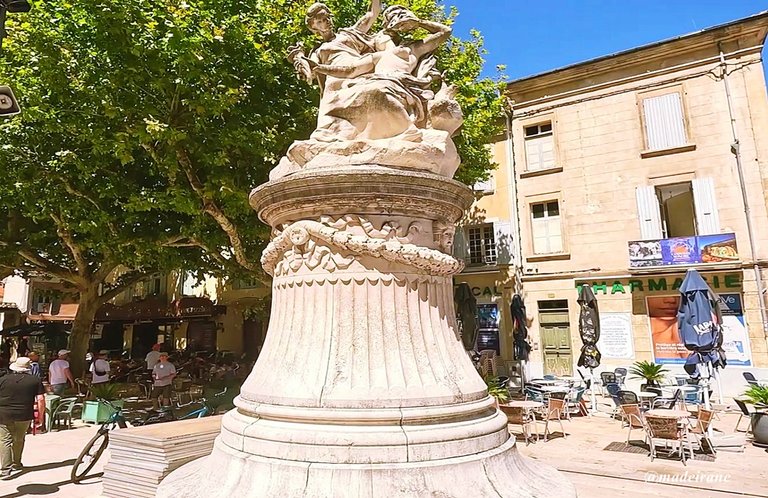
Orange, named so by the ancient Gauls in honor of the Celtic god, did not stand aside. It was founded by Julius Caesar in the 35th century BC. During the reign of Emperor Augustus, the city reached its greatest prosperity. In the 15th century, Orange became part of the French possessions. Many of the city's Roman buildings have not survived to this day, but nevertheless, there is something to see in Orange.
We left the car in a paid parking lot next to the city hall. This time, there were no problems with space.
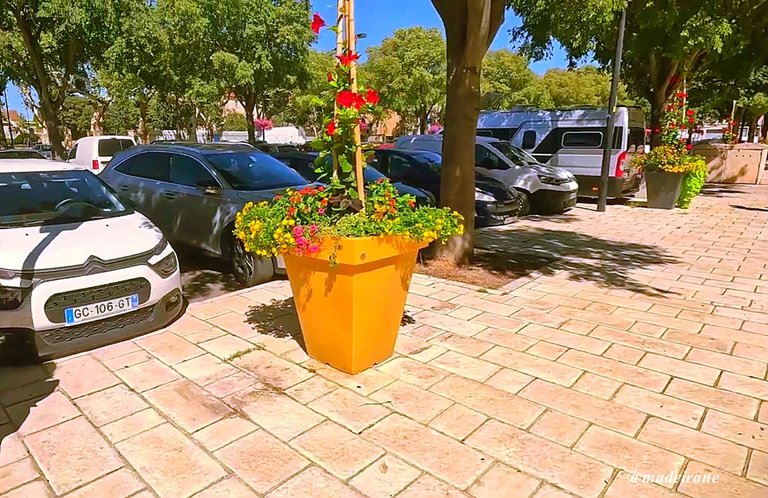

To this day, many Roman buildings have been preserved in Orange, but the most ancient and majestic monuments of the city are, of course, the amphitheater and the triumphal arch. In terms of the degree of preservation, the theater has no equal in the world.
In general, Orange was on our plans two years ago, when we were traveling around the Languedoc, but then there was not enough time for everything, and we did not see the city with its ancient buildings.
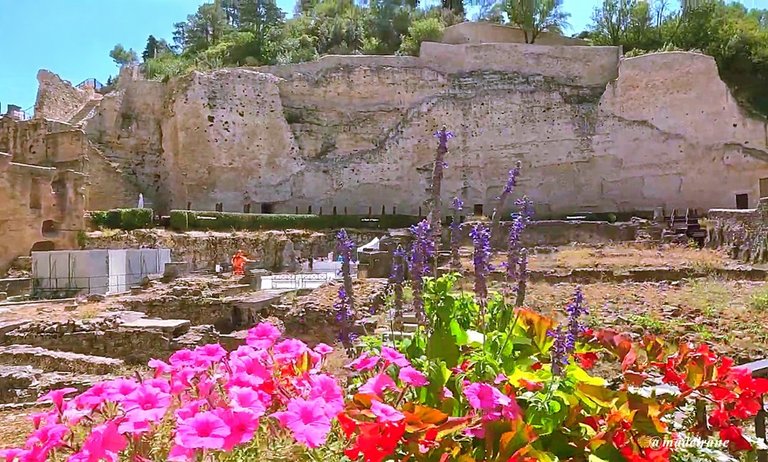
So, the first thing we wanted to see in the city and why we actually came here was the ancient amphitheater. I have no doubts that this is the most visited attraction in the city. Despite its respectable age, the amphitheater does not lose ground; performances and concerts are often held here.

Actually, the theater has been preserved better than any other ancient Roman amphitheater. The date of its construction dates back to the reign of the Roman emperor Octavian Augustus, approximately 25 BC.
The dimensions of the walls of the theater are 103 meters long and 36 meters high, and its impressive facade, not without grace, leave an indelible impression.
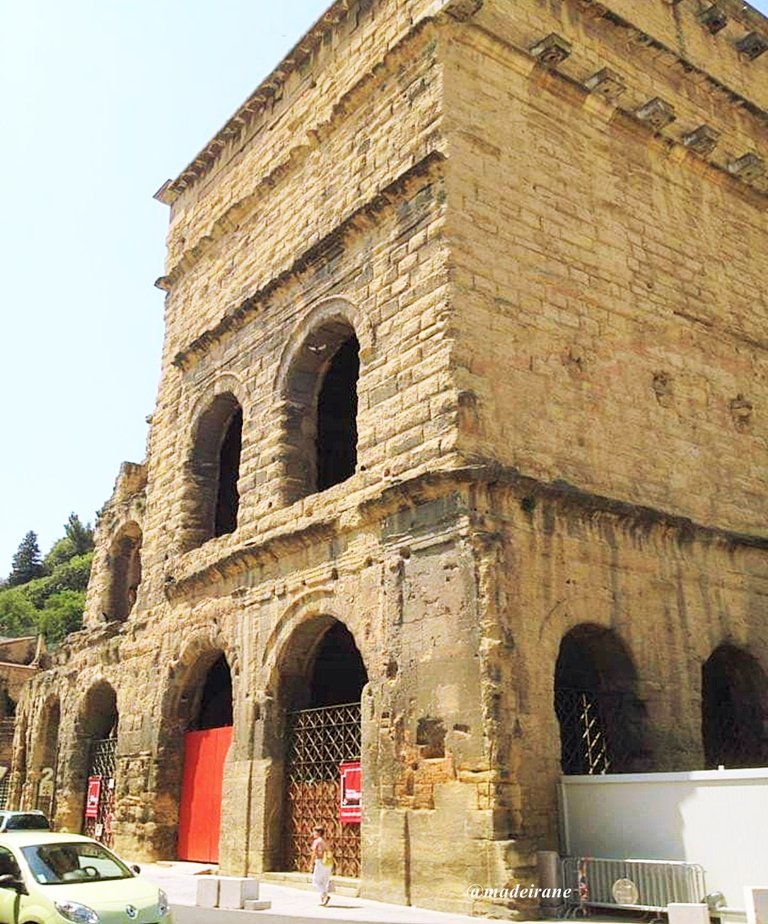
The theater played a fairly large role in the life of the ancient city; the local population spent a lot of time here. By the will of the rulers of Ancient Rome, in order to distract the townspeople from the political struggle, and at the same time spread the influence of Latin culture to the conquered territories, performances were often held in the theater.
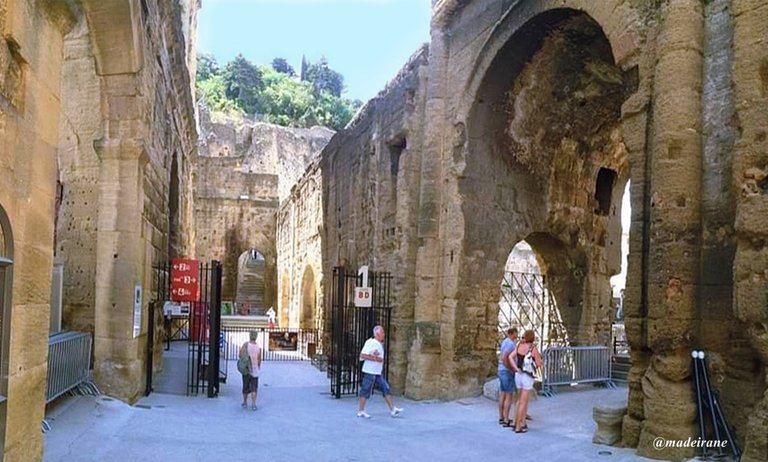
Not only did the residents of ancient Orange have the opportunity to watch performances in the theater, our contemporaries also had it. Possessing excellent acoustics, since 1869 the theater has become a venue for various celebrations, the most popular and famous of which is the opera festival.
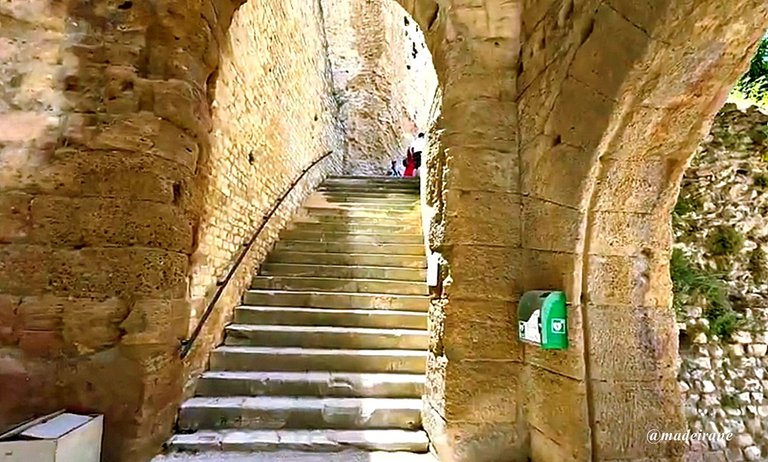
By the way, the Orange Amphitheater can boast of the fact that it is the only ancient theater in the world where the stage wall remained intact.
In the middle of the stage there is a niche in which there is a white marble statue 3.5 meters high. This statue, welcoming the citizens and a symbol of the might of the empire in ancient times, depicts Emperor Augustus.
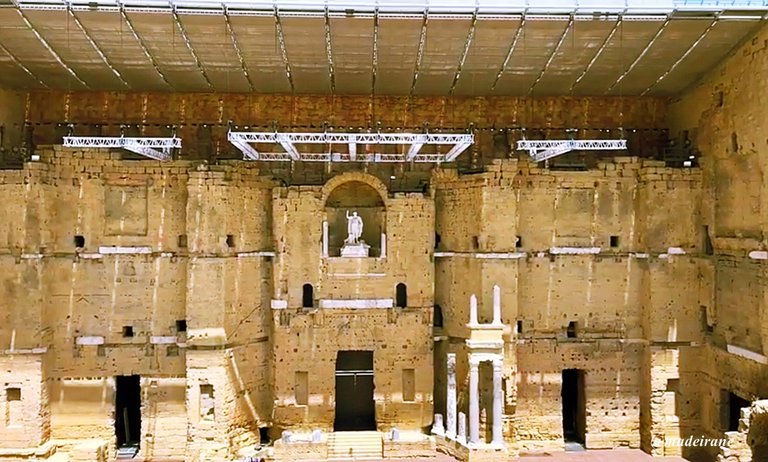
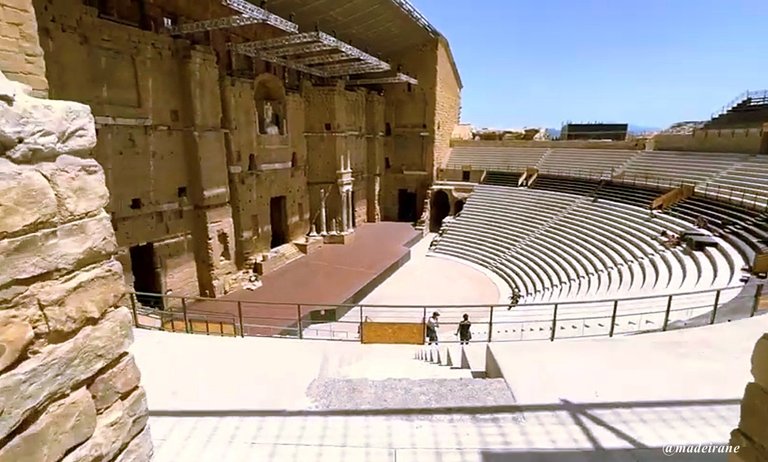
Initially, in addition to numerous statues and other decorative elements, the upper tiers were decorated with 77 marble columns; only two have survived to this day. In the amphitheater there were 37 semicircular benches, carved into three levels in sandstone; they used to accommodate about 10,000 spectators, now only 7,000 spectators.
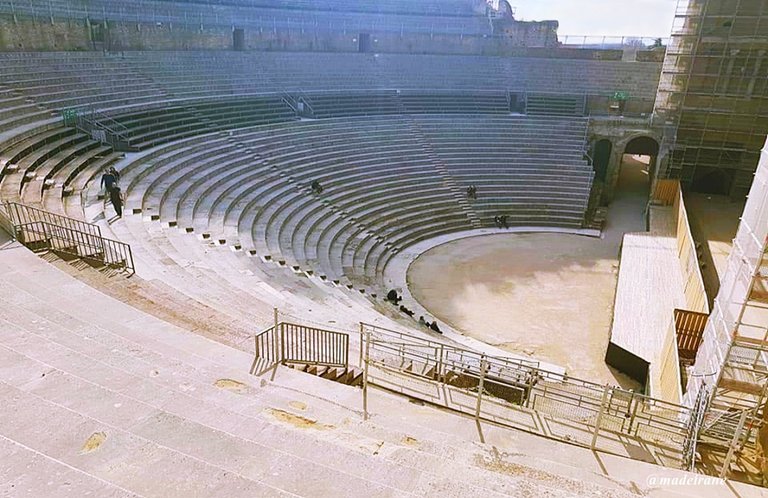
Spectators took seats according to their social status. Rich citizens and honored guests of the city were located closer to the stage, while the back rows went to poorer citizens.
The second most popular among tourists is the Arc de Triomphe. To this day, the arch has been preserved in excellent condition. The height of the building is 19.2 meters. You can see battle scenes, chained prisoners, and war trophies praising the victory of Julius Caesar in Massalia, present-day Marseille depicted in an arch.
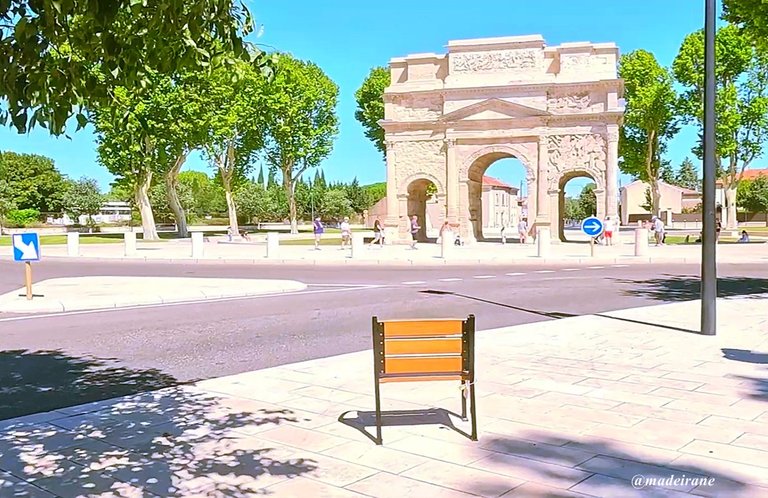
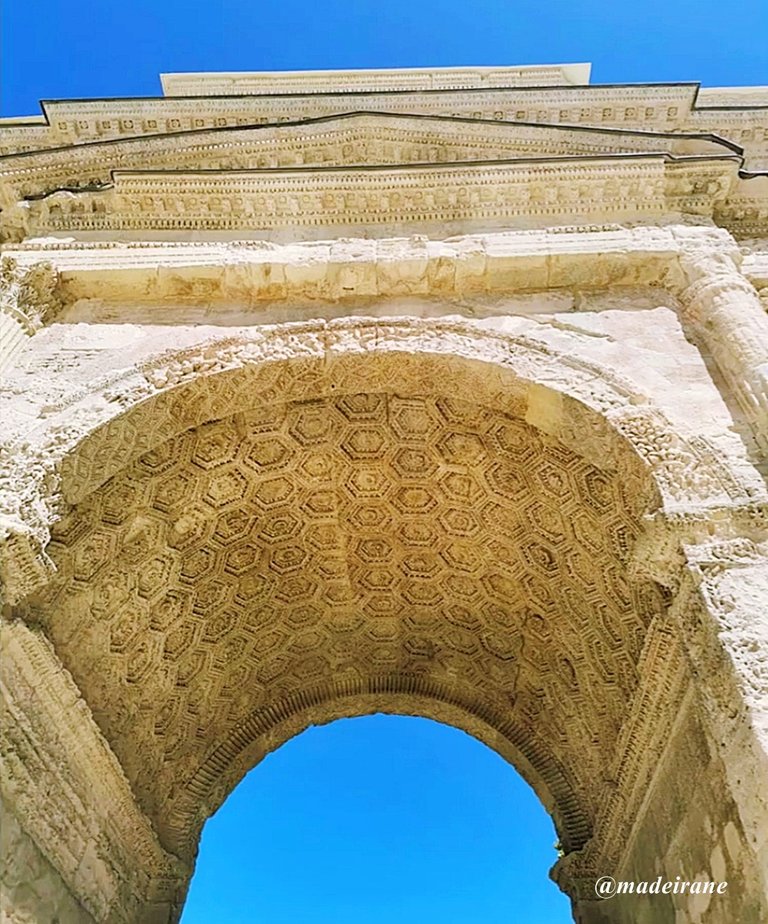

The amphitheater and the Arc de Triomphe are included in the list of UNESCO World Heritage Sites.
It is interesting to take a walk in the city center, sometimes finding yourself on streets tightly squeezed by houses, sometimes going out into cozy and very compact squares.

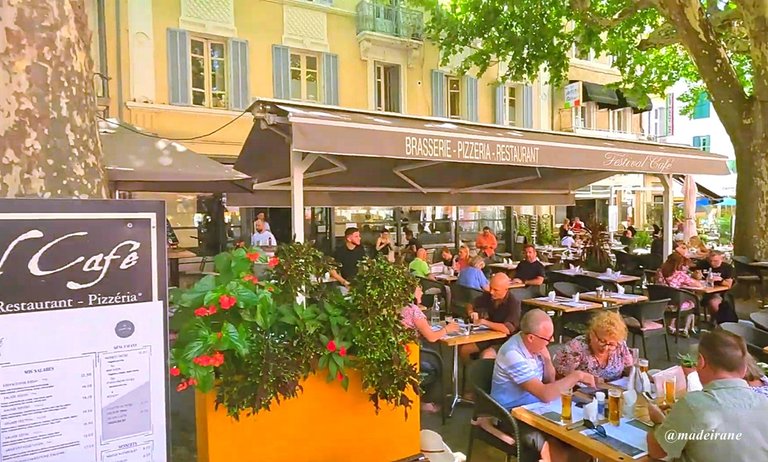
Another place in the city we visited is the Cathedral of Our Lady of Nazareth near the City Hall. There are two entrances to the cathedral. There are two entrances to the cathedral. The southern portal of the cathedral is edged with archivolts, at the base of which there are small columns and pilasters.

The western portal was made in the neoclassical style in 1827.
The cathedral was consecrated in 1208. Over the years of its existence, the church has gone through a lot; it has been rebuilt and robbed more than once. The cathedral has the form of a Romanesque basilica; its single nave includes four bays.
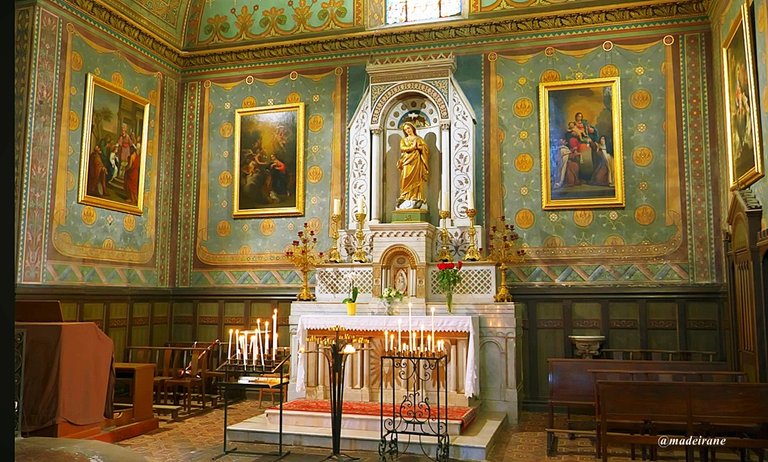
The quadrangular bell tower is located above the choir.
In the 19th century, three new stained-glass windows appeared in the cathedral. The first stained-glass window depicts the church cathedral of 529, the second stained-glass window is dedicated to Saint Eutropius, who was Bishop of Orange in the 5th century. And the last stained-glass window installed in the chapel is depicted in honor of “Our Lady of the Blessed”.
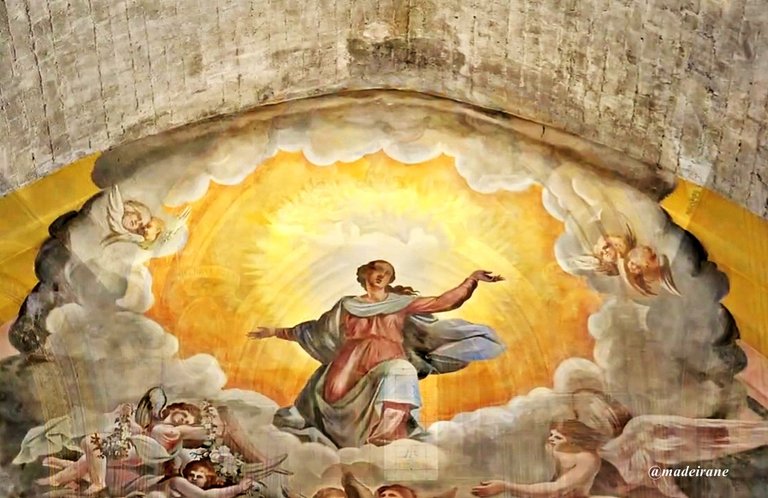
There are still well-preserved fragments of frescoes dating back to the 14th-17th centuries. We found coolness in the church; the hot Provencal sun made itself felt.
Then we continued our acquaintance with the city.
From time to time on our way, we came across fragments of buildings belonging to ancient Roman architecture.
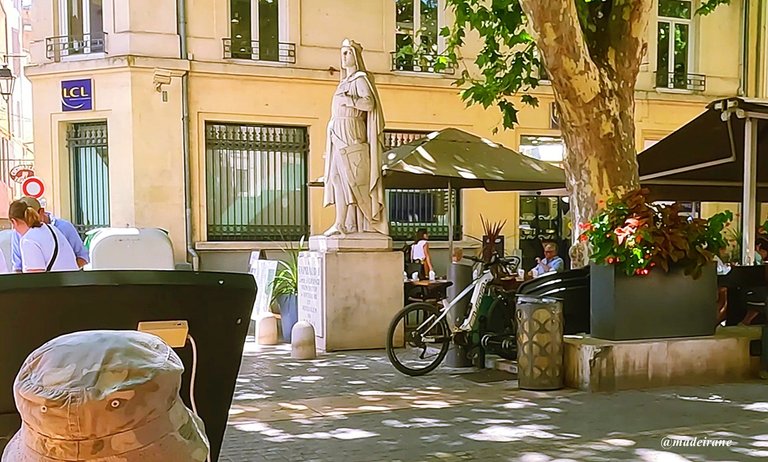
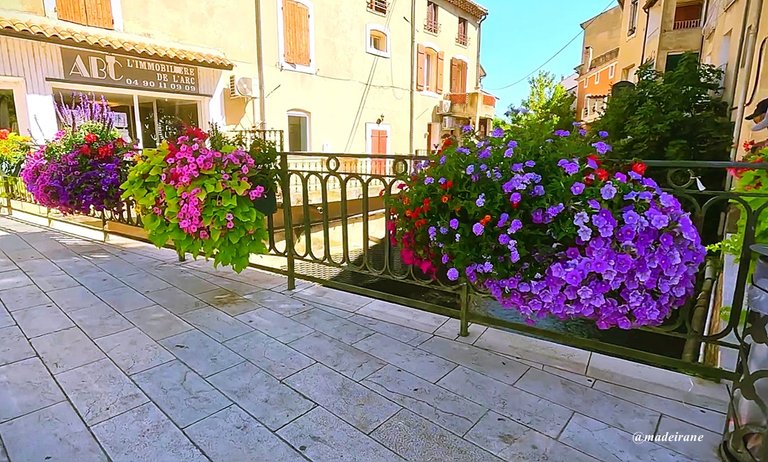
Orange is worth a visit, the city is compact and won't take up much of your time. And despite the fact that its former greatness is a thing of the past, the city preserves a piece of the great Roman Empire.
💝💝💝💝💝💝💝💝💝💝
With love @madeirane
Photos are taken by me.
© 2024
Prancūzijos architektūroje gausu įvairiausių senienų. Romėnų kolonizacijos pėdsakai labiausiai pastebimi Langedoko-Rusijono regione, tačiau Provansas neliko nuošalyje. Senovės romėnų pastatai Nime, Arlyje ir didingasis Pont du Gard yra gyva didingos civilizacijos istorija.
Oranžas, kurį senovės galai taip pavadino keltų dievo garbei, neliko nuošalyje. Jį 35 a. pr. m. e. įkūrė Julijus Cezaris. Valdant imperatoriui Augustui miestas pasiekė didžiausią klestėjimą. XV a. Oranžas tapo Prancūzijos valdų dalimi. Daugelis romėnų laikų miesto pastatų neišliko iki šių dienų, tačiau nepaisant to, Oranže yra ką pamatyti.
Automobilį palikome mokamoje automobilių stovėjimo aikštelėje prie miesto rotušės. Šį kartą problemų dėl vietos nekilo.
Iki šių dienų Oranže išliko daug romėnų statinių, tačiau patys seniausi ir didingiausi miesto paminklai, žinoma, yra amfiteatras ir triumfo arka. Pagal išlikimo laipsnį teatrui nėra lygių pasaulyje.
Apskritai Oranžas buvo mūsų planuose prieš dvejus metus, kai keliavome po Langedoką, bet tada viskam neužteko laiko ir miesto su jo senoviniais pastatais nepamatėme.
Taigi, pirmas dalykas, kurį norėjome pamatyti mieste ir dėl kurio iš tikrųjų čia atvykome, buvo senovinis amfiteatras. Neabejoju, kad tai labiausiai lankomas miesto objektas. Nepaisant garbaus amžiaus, amfiteatras nenustygsta vietoje; čia dažnai rengiami spektakliai ir koncertai.
Iki šių dienų teatras išsaugotas geriau nei bet kuris kitas senovės romėnų amfiteatras. Jo pastatymo data datuojama Romos imperatoriaus Oktaviano Augusto laikais, maždaug 25 m. pr. m. e.
Teatro sienų matmenys - 103 metrų ilgio ir 36 metrų aukščio, o jo įspūdingas fasadas, nestokojantis grakštumo, palieka neišdildomą įspūdį.
Teatras vaidino gana didelį vaidmenį antikinio miesto gyvenime; vietos gyventojai čia praleisdavo daug laiko. Senovės Romos valdovų valia, siekiant atitraukti miestiečių dėmesį nuo politinės kovos ir kartu skleisti lotynų kultūros įtaką užkariautose teritorijose, teatre dažnai buvo rengiami spektakliai.
Ne tik senovės Oranžo gyventojai turėjo galimybę stebėti spektaklius teatre, bet ir mūsų amžininkai. Turėdamas puikią akustiką, nuo 1869 m. teatras tapo įvairių švenčių, iš kurių populiariausia ir garsiausia - operos festivalis, vieta.
Beje, Oranžo amfiteatras gali pasigirti tuo, kad tai vienintelis senovinis teatras pasaulyje, kurio scenos siena išliko nepakitusi.
Scenos viduryje yra niša, kurioje stovi 3,5 m aukščio balto marmuro statula. Šioje statuloje, sveikinančioje piliečius ir simbolizuojančioje antikinės imperijos galybę, pavaizduotas imperatorius Augustas.
Iš pradžių, be daugybės statulų ir kitų puošybos elementų, viršutinius aukštus puošė 77 marmurinės kolonos; iki šių dienų išliko tik dvi. Amfiteatre buvo 37 pusapvaliai suolai, iškalti trijuose smiltainio lygiuose; juose anksčiau tilpdavo apie 10 000 žiūrovų, dabar - tik 7 000 žiūrovų.
Žiūrovai užimdavo vietas pagal savo socialinę padėtį. Turtingi piliečiai ir garbingi miesto svečiai sėdėjo arčiau scenos, o galinėse eilėse sėdėjo neturtingesni piliečiai.
Antra pagal populiarumą tarp turistų yra Triumfo arka. Iki šių dienų arka išliko puikios būklės. Jos aukštis siekia 19,2 metro. Arkoje galima išvysti mūšio scenas, grandinėmis surakintus belaisvius ir karo trofėjus, šlovinančius Julijaus Cezario pergalę Massalijoje, dabartiniame Marselyje, pavaizduotą arką.
Amfiteatras ir Triumfo arka yra įtraukti į UNESCO pasaulio paveldo sąrašą.
Įdomu pasivaikščioti po miesto centrą, kartais atsiduriant gatvelėse, glaudžiai suspaustose namų, kartais išeinant į jaukias ir labai kompaktiškas aikštes.
Dar viena mūsų aplankyta miesto vieta - Nazareto Dievo Motinos katedra, esanti netoli miesto rotušės. Į katedrą yra du įėjimai. Į katedrą yra du įėjimai. Pietinis katedros portalas apjuostas arkivyskupijos stulpais, kurių apačioje yra nedidelės kolonos ir piliastrai.
Vakarinis portalas buvo pagamintas 1827 m. neoklasicizmo stiliumi.
Katedra buvo pašventinta 1208 m. Per savo gyvavimo metus bažnyčia patyrė daugybę išgyvenimų; ji ne kartą buvo perstatyta ir apiplėšta. Katedra yra romėniškos bazilikos formos; jos vieną navą sudaro keturios navos.
Keturkampio formos varpinės bokštas yra virš choro.
XIX a. katedroje atsirado trys nauji vitražai. Pirmajame vitraže vaizduojama 529 m. bažnyčios katedra, antrasis vitražas skirtas šventajam Eutropijui, kuris V a. buvo Oranžo vyskupas. O paskutiniame koplyčioje įrengtame vitraže pavaizduota "Dievo Motinos palaimintosios" garbei.
Koplyčioje dar yra gerai išlikusių XIV-XVII a. freskų fragmentų. Bažnyčioje radome vėsą; kaitri Provanso saulė davė pajusti save.
Tada tęsėme pažintį su miestu.
Pakeliui kartkartėmis susidurdavome su senovės romėnų architektūros pastatų fragmentais.
Oranžą verta aplankyti, miestas kompaktiškas ir neužims daug laiko. Ir nepaisant to, kad buvusi jo didybė jau praeityje, miestas išsaugojo dalelę didžiosios Romos imperijos.
Translated with DeepL.com (free version).
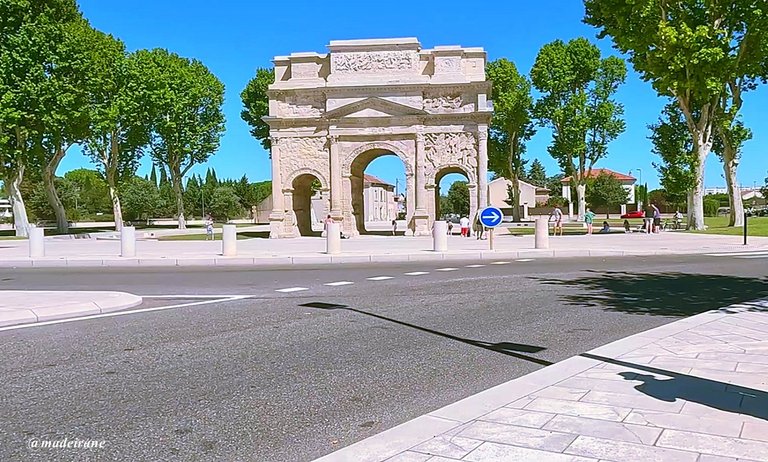
Congratulations, your post has been added to Pinmapple! 🎉🥳🍍
Did you know you have your own profile map?
And every post has their own map too!
Want to have your post on the map too?
Wow! a beautiful place to visit the view of the amphitheater is spectacular, my favorite part is the gardens with their beautiful and colorful flowers.
Greetings!
A beautiful place, the city must have been so magnificent in the past
Congratulations @madeirane! Your post made the TravelFeed team happy so we have sent you our big smile. Keep up the good job. 😃
Thanks for using TravelFeed!
@for91days (TravelFeed team)
PS: TravelFeed is in social media to reach more people, follow us on Facebook, Instagram, and Twitter.